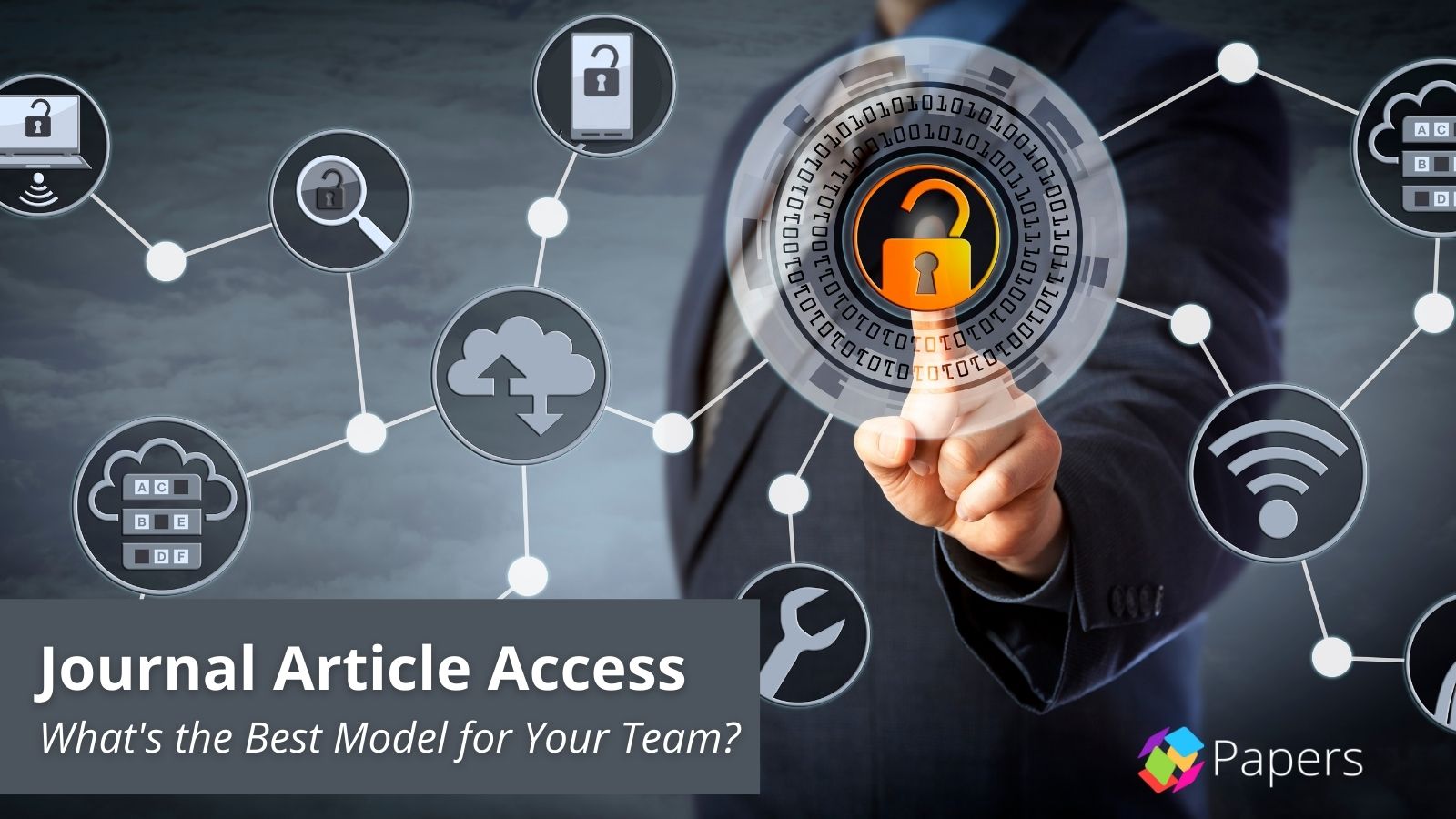Journal Article Access: Which Model Works Best for Your Team?

As library managers face dwindling budgets, they’re likely also facing questions about how users should cost-efficiently access digital journal articles. The models available include individual subscriptions, site-wide licenses, pay-per-view tokens, and document delivery.
Some libraries implement a mixed model approach, and most will re-evaluate their offerings every few years based on usage statistics, company growth, and budget.
Here’s a brief overview of each of each model:
Individual article access (non-subscription)
In this model, the library provides no subscriptions for users. Instead, users access journal articles directly from individual publishers’ websites. They must use a credit card to download a copy of the article to their computer. In most cases, the article is not shareable with other colleagues, per terms of copyright.
Pros:
- Library incurs no upfront costs
- No library support staff required
Cons:
- Articles are not shareable
- Reimbursement for credit cards takes time and resources
- The same article will probably be downloaded multiple times by multiple people, incurring a new cost each time
Site-wide subscriptions
In this model, the library pays an upfront subscription fee directly to the publisher for digital access. The library patrons trying to access the article receive dedicated login credentials to access the article. If there are any restrictions around sharing the content, the user must strictly follow them. The library needs to prepay the subscription fee(s) via purchase orders. Terms of the subscription are typically one, two, or three years; and the pricing improves as you move into longer terms.
Pros:
- Can obtain usage statistics from the publisher
- Allows downloads without providing a credit card
Cons:
- Requires upfront payment to the publisher
- Difficult to break a contract during the subscription term
- The same article can be downloaded multiple times by multiple people, incurring a new cost each time
Tokens/pay-per-view
Users receive articles through the pay-per-view option by a token model. Administrators purchase tokens in bulk from the publisher based on a negotiated price and quantity. Tokens are used to download journal articles not included in a subscription. The options are available via different pricing models, with the most common being a prepaid token bundle purchase, in which the library prepays a set of tokens. Typically, the higher the volume of the purchase, the lower the price per token.
Pros:
- Instant access to a broad range of full-text material to which your institution does not currently subscribe
- Seamless purchasing on the part of the user
- Cost per download may be less expensive than individual access using a credit card
- Token usage included in monthly statistics reports from publishers
Cons:
- Tokens often have an expiration date and unused tokens are not refundable
- Tokens may not be applicable for all downloads
- Requires careful analysis when initially purchasing tokens, as overestimation of usage may cause them to expire before they are used
Document delivery
Document delivery supplements an organization’s existing subscriptions and provides one-click, self-service access to full-text articles across popular publishers and journals. Documents are delivered quickly and directly to the user, and the platform links directly to open-access, subscriptions, and purchased tokens, avoiding duplicate purchases. Expect to pay a fee for both the article and an additional document delivery fee.
The most efficient document delivery systems are embedded within a cloud-based, total literature management solution. This cloud-based program allows users to download articles on demand, import articles into shared libraries, annotate articles within libraries, and create complex bibliographies.
Although the features are designed to be self-serve among the users, the platform’s management usually requires at least one dedicated support staff person.
Pros:
- Eliminates duplicate purchases
- Allows for self-service article delivery
- Most full-text articles are available to the user within minutes
Cons:
- Publisher’s article fee plus additional document delivery fee
Papers Enterprise offers integrated subscription management and document delivery service that seamlessly integrates with users’ workflows both within the Papers apps and across the web.
Stay Up to Date
Join our mailing list to stay on top of Papers’ latest updates.